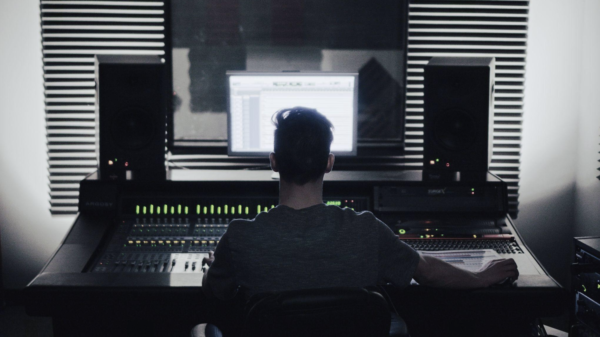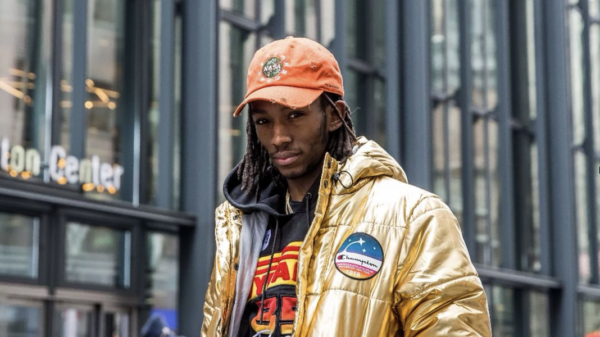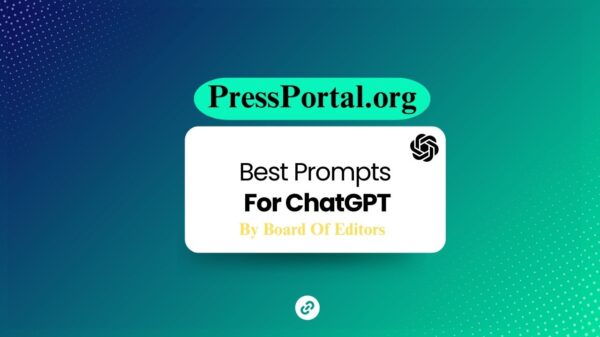Power to the People is a portrait of John and Yoko as a young married couple splashing down in New York City, making friends with the local radicals and con men and boho scenesters. In October 1971, John Lennon is turning 31, coming off his first post-Beatles success with Plastic Ono Band, about to hit Number One with his brand new Imagine. But he and Yoko Ono feel bored in their lavish English country mansion Tittenhurst Park, even after building a studio and cutting most of Imagine there. As he shrugs, “We didn’t like being Lord and Lady of the Manor.”
So John and Yoko pop over to New York and get a tiny apartment in the West Village. They thrive on the city’s electric energy, with neighbors like Bob Dylan and Allen Ginsberg. They start wearing berets, to show that they’re now militant revolutionaries. They get their counterculture tickets punched by every two-bit hippie hustler in town. They’re leaving home; they’re having fun. They never go back. “Going back to England is like going to Denmark,” John complains. “And I don’t want to live in Denmark!”
Power to the People gathers the music they made in their New York radical days, in a giant box set with their son Sean Ono Lennon as producer and creative director — nine CDs, 3 Blu-Rays, with a 204-page book. It follows two superb deluxe boxes devoted to Imagine and Mind Games, but this package has a trickier task: salvaging the dodgy 1972 album Sometime in New York City. In a clever strategic move, it downplays the album to focus on live material, outtakes, acoustic home demos, for a documentary of the busy hippie energy swirling around the couple during this brief interlude in their lives. Like the excellent 2024 doc One to One, it captures John and Yoko falling in love with their new city.
It was an exciting time for these two. They played every progressive benefit they could. Most crucially, they played the “One to One” charity concerts in August 1972, at Madison Square Garden, to benefit special needs children. Those turned out to be the only two full-length live shows that John ever played after the Beatles, as well as the last two he ever did with Yoko — both included in this box.
Editor’s picks
They also celebrated their new move by dashing into the studio to bang out a quickie album of protest tunes, commenting on the latest news headlines, plus one actual good song, “New York City.” The album was Some Time in New York City on the cover, but Sometime in New York City on the label, their liner notes, and their letters, a hint of how slapdash the whole project was. They hooked up with a greasy bar band called Elephant’s Memory, though smartly recruiting their pal Jim Keltner on drums, crediting the whole thing to “John & Yoko/Plastic Ono Band with Elephant’s Memory Plus Invisible Strings.” The cover declared “Ono News That’s Fit to Print.” It also had producer Phil Spector’s face and the caption “To Know Him Is To Love Him.”
Alas, as 1970s ex-Beatle albums go, Sometime ranks with George’s Dark Horse, Wings’ Wild Life, and Ringo’s Bad Boy at the bottom of the barrel. John and Yoko sing about their new celebrity-radical buddies, marijuana laws, prison conditions (“Attica State, Attica State, we’re all mates with Attica State”), the Troubles in Northern Ireland (“you Anglo pigs!”), with sentimental slogans and half-assed music. The most fun songs are the awesomely terrible ones, like the Monty Python-worthy “Luck of the Irish,” where Yoko concludes, “The world would be one big Blarney Stone!”
“New York City” is the one that always jumped out from Sometime, shining like the top of the Chrysler Building, with a trashy Chuck Berry guitar riff and a chorus hook en español, as John yells, “Que pasa, New York!” He toasts the Big Apple from the Apollo Theater to Max’s Kansas City to the Statue of Liberty, with a high-speed excitement not far from those local kids in the New York Dolls. But it’s also the album’s most politically credible moment, celebrating the multi-cultural New York immigrant dream. John keeps cheering “What a bad-ass city,” flipping off the Feds trying to deport him. Was this the NYC song Mick Jagger was aiming to top with the Stones’ “Shattered”? If so, well played, since these are two of the kickiest songs either John or Mick came up with in the Seventies.
Related Content
The box has nearly all their songs from this period, with a glaring exception — the single “Woman is the N***** of the World,” which doesn’t fit into any of the nine discs. It was Ono’s unfortunate title for a confrontational feminist message, though she could have gotten a better title out of the key line, “Woman is the slave to the slaves.” It’s the only moment on Sometime where Lennon faces up to his complicity as part of the oppression, since everyday misogyny was part of his life in ways that “Attica State” and “John Sinclair” weren’t. The song meant enough to them to lead off the album, with its lyrics front and center on the cover. But the song and its message get erased here. (The censorship might be easier to lament if the song had anything going on musically.)
Power to the People wisely focuses on the excellent “One to One” concerts — they’re the heart of this box. You can hear that John is terrified, with a nervous gum-snapping edge in his voice that suits tough tales like “It’s So Hard” and “Well Well Well.” You can also hear that the back-up sweathogs in Elephant’s Memory sincerely believe they’re qualified for this gig, with no qualms about showing off. (Hilariously diplomatic comment from Sean Ono Lennon in the liner notes: “Let’s just say, if I was in a band with John Lennon, I wouldn’t solo over his voice when he’s singing.”)
There’s a great live “Hound Dog,” enhanced by Yoko’s canine howls and John spluttering “Elvis, I love ya!” in the final verse. “This is what you call an encore,” he tells the crowd. “‘Cause we’ve done enough. You gotta be the encore too!” That leads into “Give Peace a Chance,” with Stevie Wonder singing along. John also wails a powerhouse version of “Mother.” “My father singing ‘Mother’ is my personal highlight from the show,” Sean remarks. “Watching and hearing it may require some tissues and possibly a blanket and/or a bottle of whiskey.”
In an early outtake of “New York City,” John rails against “that clean, clean, fuckin’ recorded sound which I hate.” There’s little of that cleanliness here. The new remixes include longer versions of “Sunday Bloody Sunday” and “John Sinclair.” There’s a disc of raw studio jams on Fifties rock & roll oldies like “Honey Don’t,” “Yakety Yak,” and “Ain’t That a Shame.” They rough it up at political rallies and TV chat-shows. There’s the “Live Jam” material that stretched the original Sometime into a pricey double—getting noisy at the Fillmore with Frank Zappa’s Mothers, recruiting friends in 1969 (Eric Clapton, Keith Moon, good old George Harrison) for a 16-minute feedback jam on “Don’t Worry Kyoko.” There’s also a bizarro reggae version of “Give Peace a Chance” featuring none other than Jerry Lewis, from his Labor Day MDA Telethon. Jerry sings along, while introducing the couple as “two of the most unusual people in the whole of the world—and I don’t just mean the world of entertainment!”
The studio banter is full of humor that doesn’t necessarily show up on the finished album, like when Yoko begins “Born in a Prison” with the words, “I’m going to be singing either in Liza Minnelli style or Yoko Ono style.” After “Sunday Bloody Sunday,” John quips, “Sorry Paul, it’s all over now,” since even he realizes that he’s failed to meet the not-terribly-lofty standard of Wings’ “Give Ireland Back to the Irish.” (Macca’s song about the infamous Bloody Sunday massacre might have been clumsy, but at least he wasn’t singing, “It’s those mothers’ time to burn!” Let’s just say the bar was pretty low for Bono.)
The final disc is pure joy: John alone with his guitar, in previously unreleased 1971 hotel tapes. He drifts away into beautifully fragile solo reveries on Fifties rock & roll tunes from his idols like Buddy Holly, Little Richard, and Elvis Presley, with witty romps through “Hi-Heel Sneakers” and “Slippin’ and Slidin’.” There’s also previously unheard acoustic demos of originals like the poetically poignant ballad “When the Teacher,” cut in an Ann Arbor hotel room in December 1971. He also teams up with protest singer Phil Ochs, playing back-up guitar as Ochs sings familiar standards like “I Ain’t Marching Anymore.”
The book is fun, too, packed with memorabilia. The highlight: John’s angry letter to the president of Capitol Records, complaining that the album cover has a sticker covering the (faked) photo of Richard Nixon and Chairman Mao dancing naked. He rages, “I’m really sick and tired of fighting E.M.I./Capitol—who over the years have fucked up some of my/our most radical, and effective covers—including the now rare and expensive — Beatle meat ’n’ babies picture — not to mention ‘Two Virgins’ (another classic!)”
Trending Stories
John and Yoko shied away from making any personal statements in their protest period — there’s nothing like “Oh My Love” or “Oh Yoko!” here. But there’s good reason for that — their marriage was already headed for the rocks. On Election Night 1972, they went to Jerry Rubin’s place to watch the results as Nixon won 49 states; Lennon got drunk and went into the next room to have sex with another woman while Ono just sat there. (She turned the experience into her song “Death of Samantha.”) Their romantic and radical ideals collapsed together. Less than a year after releasing Sometime in New York City, the couple separated. John jetted off to L.A. for his Lost Weekend — guzzling his weight in Brandy Alexanders, getting thrown out of bars with Harry Nilsson, jamming with Paul and Elton, making the scene with his groovy new muse May Pang.
Power to the People might give you some fresh new perspective on the couple’s protest songs, but it wisely doesn’t try to make the case for Sometime in New York City as the under-appreciated classic it isn’t. Instead, it frames these songs in the context of a short-lived but creative interlude in the tangled lives of two complex artists. Before the Lost Weekend, John and Yoko had their New York Year — turning their personal confusions into beautifully vivid moments of rage and pain.





























